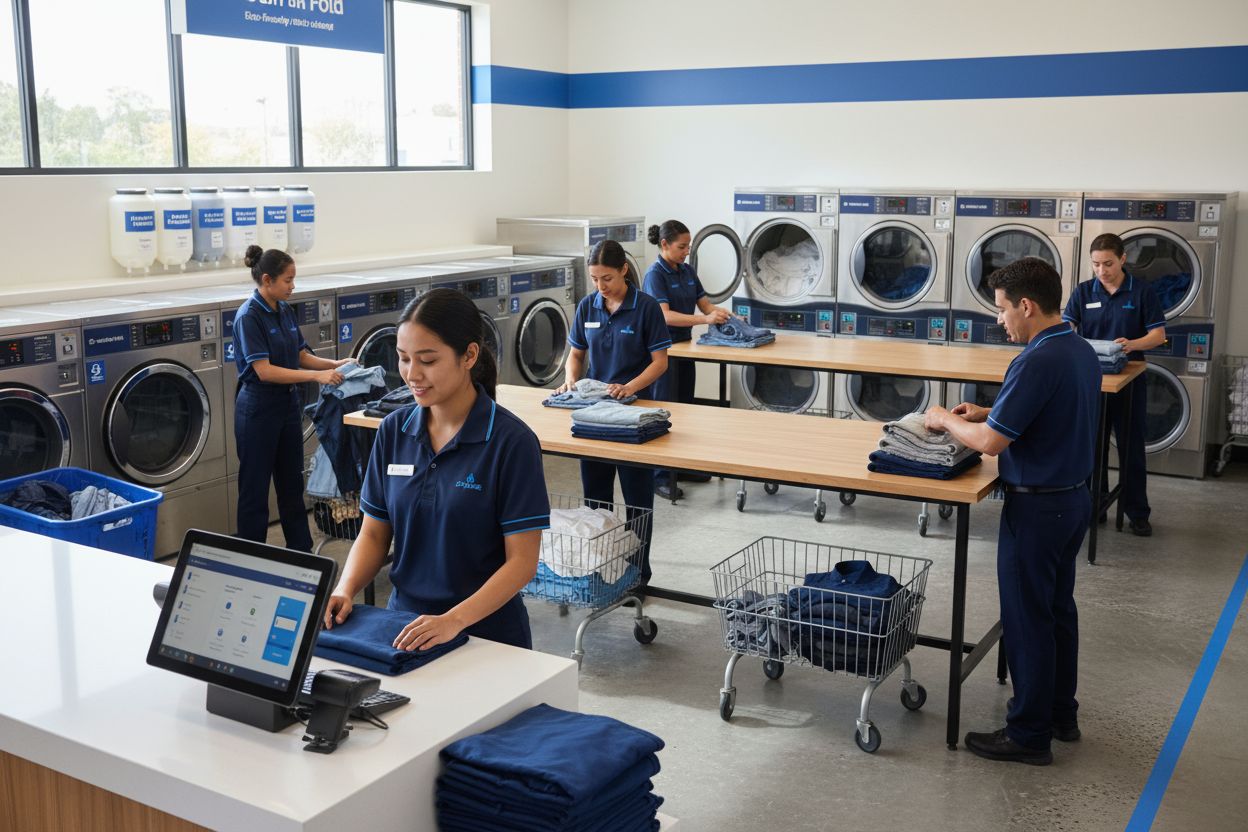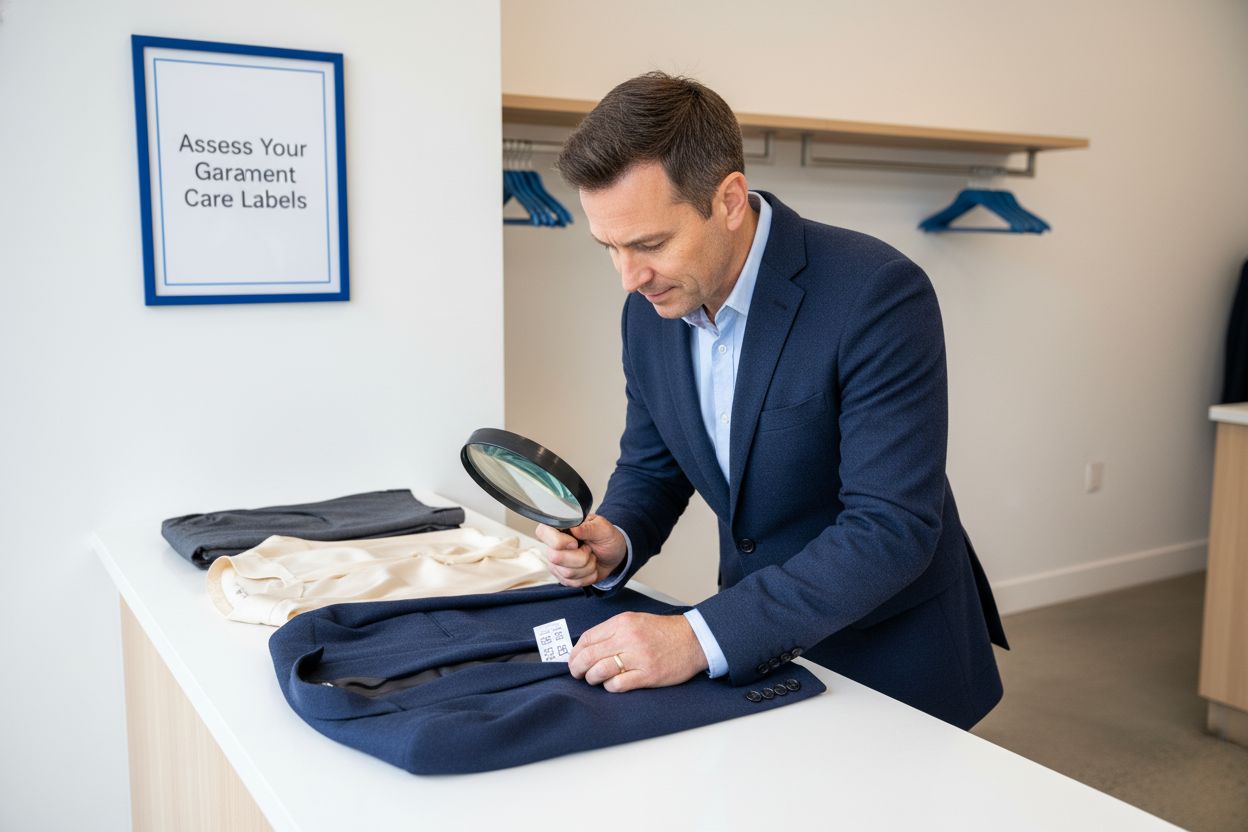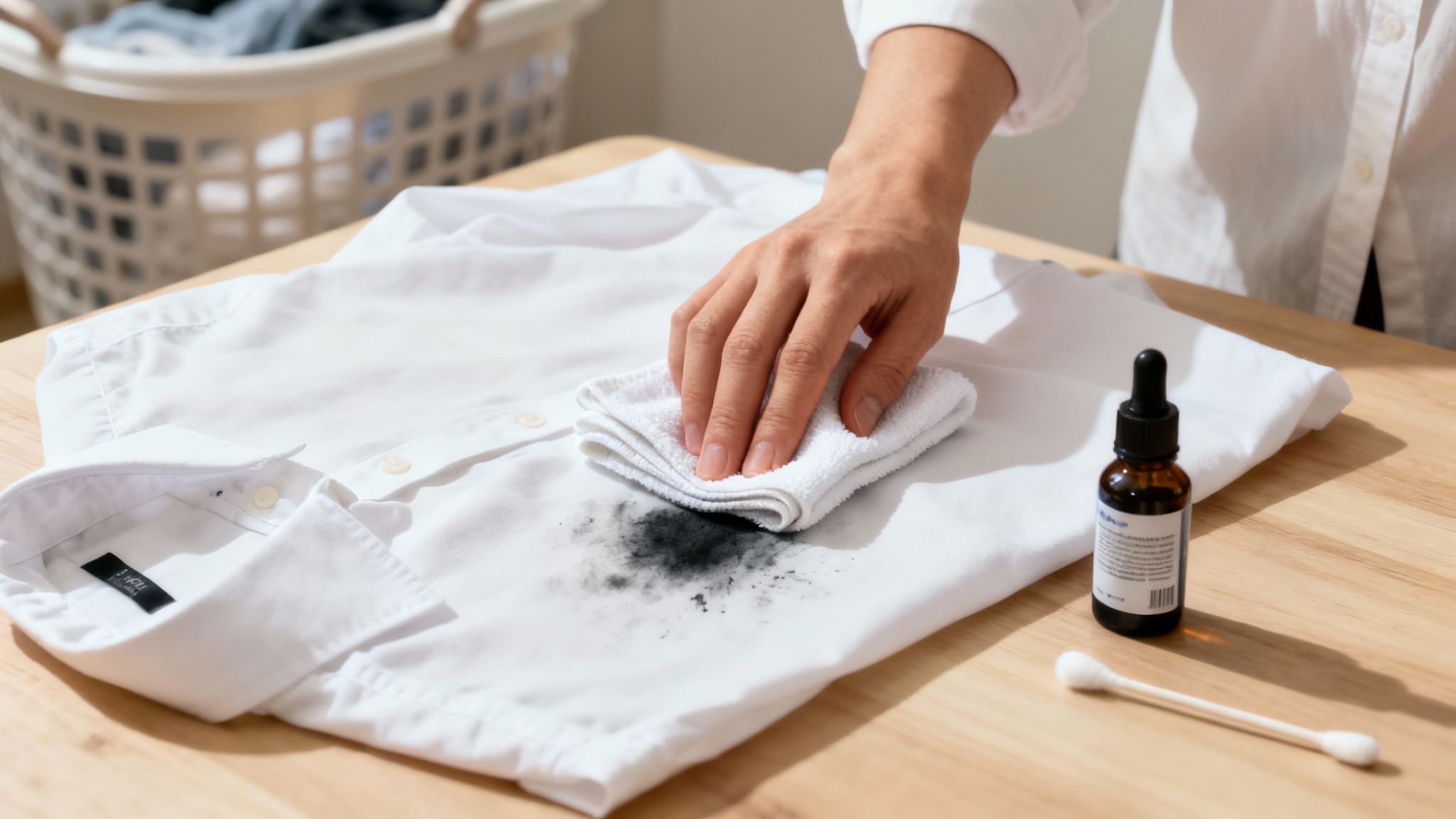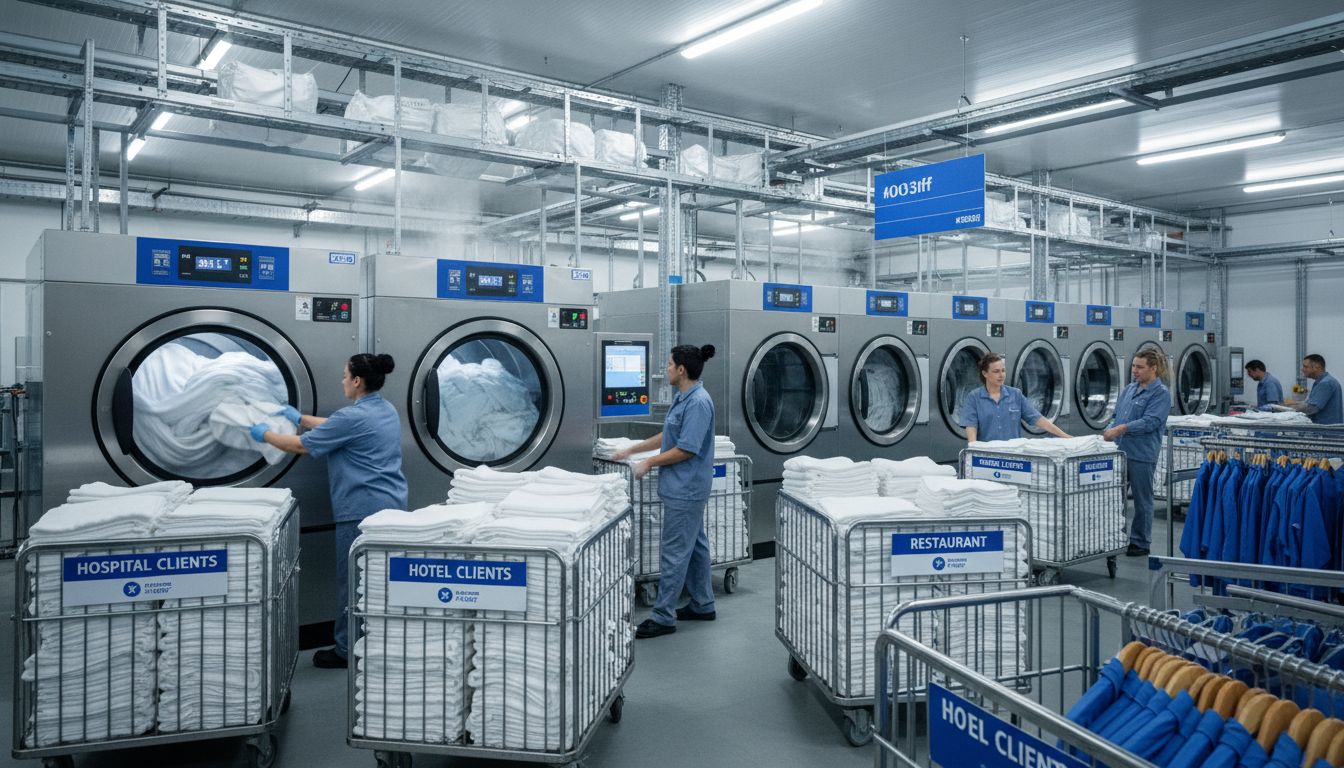Business Laundry Checklist: Streamline Cleaning for Success
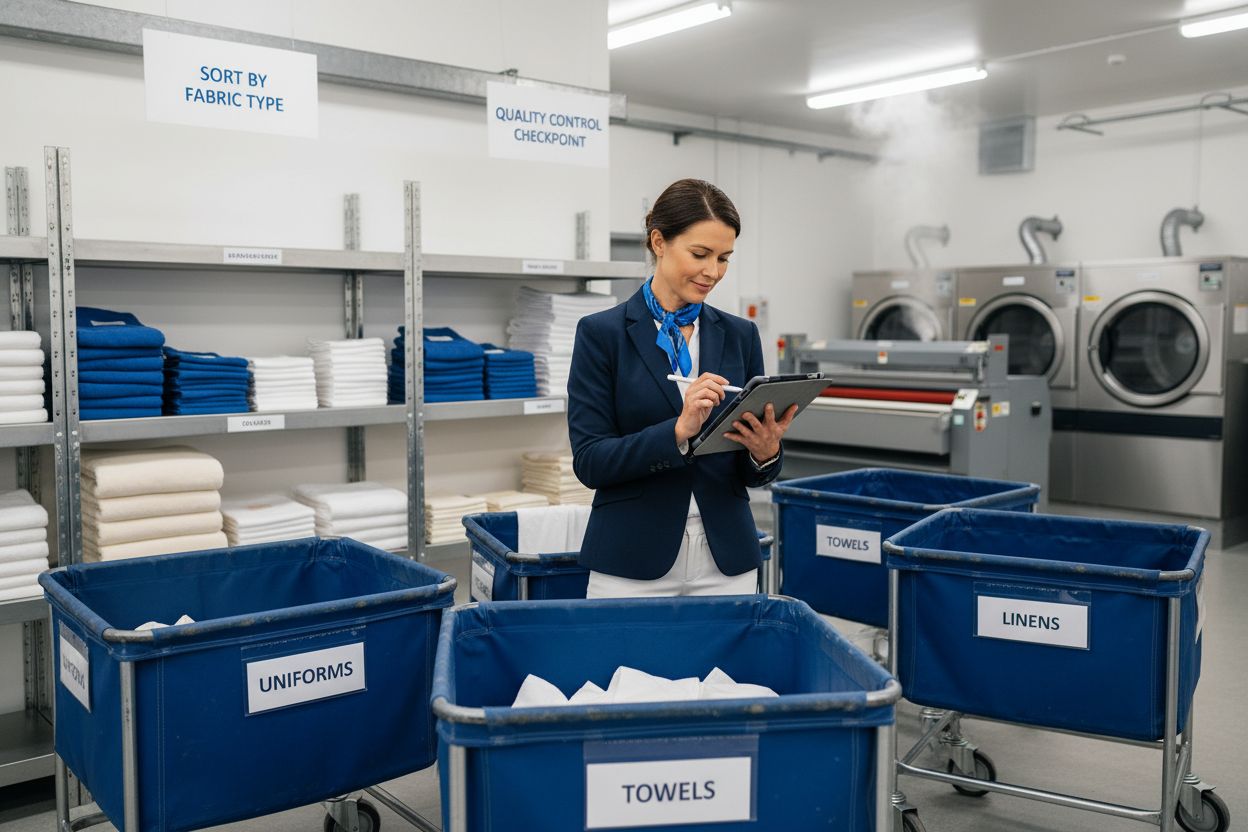
Did you know that improper laundry sorting causes up to 15 percent of commercial textile damage each year? Missteps in your laundry process can quickly lead to color runs, fabric wear, or even costly replacements. Organizing your business laundry with careful attention to sorting, labeling, and clear instructions makes a big difference. Simple changes can protect your textiles, save you money, and keep your operations running smoothly right from the start.
Quick Summary
Step 1: Assess Laundry Needs and Gather Items
Before diving into your laundry process, you’ll want to understand exactly what items need cleaning and how they should be handled. This step is about creating a systematic approach that saves time and prevents costly mistakes.
Start by conducting a comprehensive inventory of your business textiles. Walk through your workspace and gather everything that requires laundering. This might include uniforms, tablecloths, kitchen towels, cleaning rags, or specialty fabrics specific to your industry. According to laundry service research, a tailored commercial laundry approach helps businesses create custom plans based on their specific volume and schedule.
Organize your items by fabric type, color, and cleaning requirements. Separate delicate materials from sturdy work textiles. Group white items separately from colored ones to prevent color bleeding. Pay special attention to heavily soiled items that might need pre treatment or special washing techniques.
Pro Tip: Take a moment to inspect each item for damage. Tears or significant wear might require repairs before laundering to prevent further deterioration.
If tracking seems overwhelming, consider creating a simple spreadsheet or using a digital inventory system. This helps you monitor what gets cleaned when and ensures nothing gets missed. According to outsourcing research, strategic laundry management can help businesses avoid equipment costs while maintaining consistent quality.
Ready for the next step? Prepare to sort and pretreat your gathered items for optimal cleaning results.
Step 2: Sort and Label Laundry by Type and Preference
Now that you have gathered your items, sorting becomes crucial for maintaining fabric quality and ensuring effective cleaning. This step transforms a potential laundry nightmare into a smooth organizational process.
Begin by separating your textiles into clear categories. According to expert recommendations, you should sort by color, fabric type, soil level, and specific product preferences. White items go in one pile, colored fabrics in another. Delicate materials like silk or fine linens need special handling separate from sturdy work uniforms.
Pay close attention to soil levels. Heavily soiled work clothes with grease or dirt should be washed differently from lightly used items. This prevents cross contamination and ensures each fabric receives the appropriate cleaning treatment.
Pro Tip: Create a simple color coding system using tags or markers to quickly identify special handling requirements for different textile groups.
Labeling becomes your best friend in this process. Use durable tags that clearly indicate fabric type, washing instructions, and any special notes. Professional drop off services recommend using color coded clips to keep customer loads separate and prevent potential mix ups.
Consider creating a quick reference chart near your sorting area.
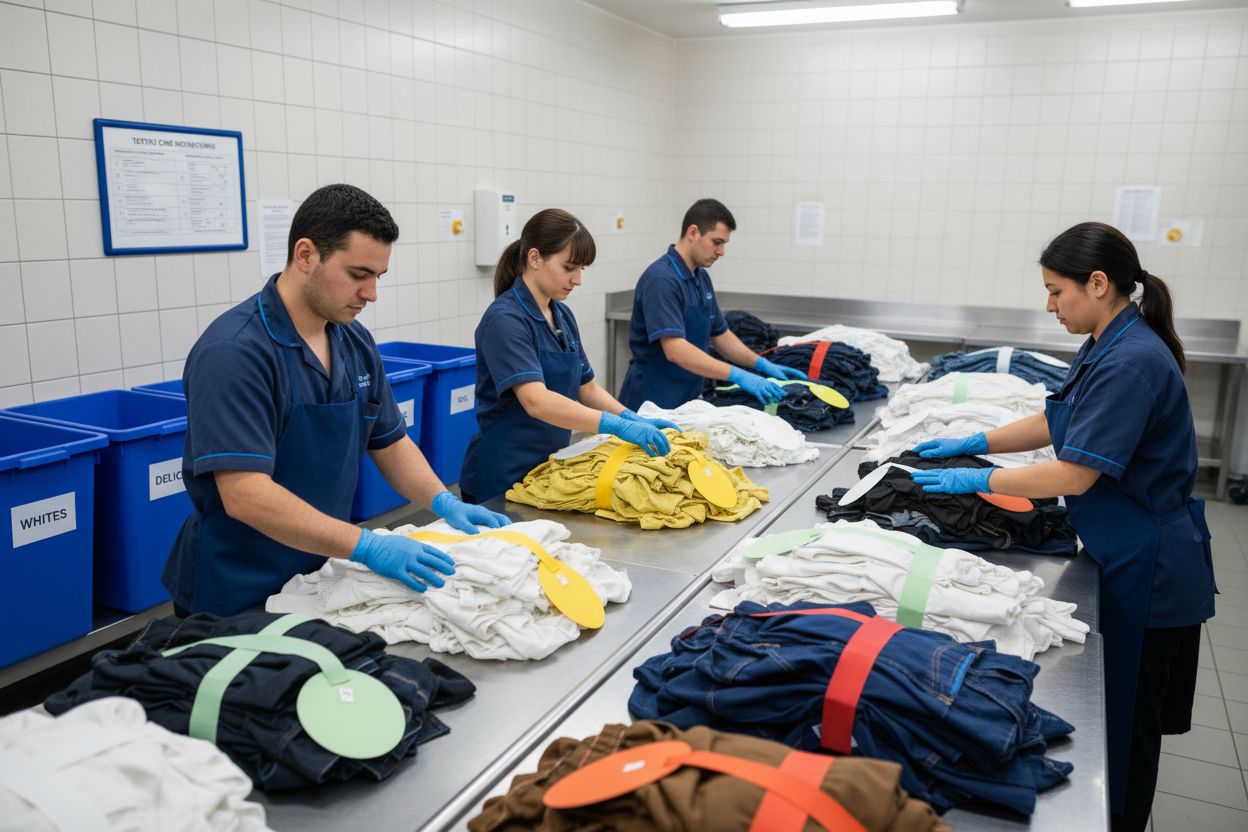
Here’s a comparison of laundry sorting criteria and their importance:

Ready to move forward? Next you will prepare your sorted items for the actual washing process.
Step 3: Schedule Pickup or Arrange Drop-Off Service
With your laundry sorted and ready, it is time to choose the most convenient way to get your items cleaned. Selecting the right service method can save you significant time and reduce operational stress.
Your primary options are pickup or drop-off services. For businesses with limited time, pickup services offer maximum convenience. When selecting a provider like Columbia Pike Laundry, look for flexible scheduling and transparent communication about turnaround times.
If you choose pickup service, prepare your sorted and labeled items in a designated area. Most professional laundry services will provide specific guidelines about packaging and preparation. Ensure your textiles are neatly organized and easily accessible for the pickup team.
Pro Tip: Schedule recurring pickups to establish a consistent laundry management routine that eliminates last minute scrambling.
For drop-off services, confirm the location hours and any specific requirements. Some providers have different processing times for various fabric types or soil levels. Bring your sorted items during their convenient business hours and discuss any special handling needs directly with staff.
Technology can streamline this process. Many modern laundry services offer online scheduling and tracking. Take advantage of digital platforms that allow you to book pickups schedule deliveries and monitor your laundry status in real time.
Ready for the next step? Prepare to track your laundry and ensure smooth processing.
Step 4: Set Cleaning Preferences and Special Instructions
Communicating your exact cleaning requirements ensures your business textiles receive precise care. This step transforms standard cleaning into a customized service tailored to your specific needs.
Start by reviewing each textile category and identifying unique care instructions. Laundry service research emphasizes the importance of documenting special service requirements clearly to prevent misunderstandings and ensure customer satisfaction.
For delicate fabrics like silk uniforms or specialty work wear, specify exact handling instructions. Do you want air drying for certain items? Need gentle cycle washing?
Pro Tip: Create a detailed preference sheet that includes fabric type, washing temperature, drying method, and any stain treatment requirements.
Take time to highlight any items with special considerations. Grease stained work uniforms might need pre treatment. Embroidered logos could require specific washing techniques. Communicate these nuances clearly with your laundry service provider.
Modern laundry services often provide digital platforms where you can input these detailed preferences. Take advantage of these tools to ensure your instructions are recorded accurately and consistently.
Ready for the final steps? Prepare to track your laundry and confirm its successful processing.
Step 5: Review and Confirm Cleaned Laundry Delivery
The final step in your laundry management process involves carefully reviewing and confirming the quality of your cleaned items. This crucial stage ensures that your business textiles meet professional standards and are ready for immediate use.
Upon delivery, immediately inspect each item thoroughly. Check for complete cleaning, proper pressing, and preservation of fabric integrity. Research on outsourced laundry services highlights that consistent delivery quality provides businesses with confidence in their cleaning partner.
Look for specific details during your review. Are colors bright and consistent? Do uniforms appear crisp and professional? Are delicate items handled with appropriate care? Examine each textile against the special instructions you provided earlier in the process.
Pro Tip: Create a quick visual checklist that allows you to rapidly assess each returned item against your original specifications.
Technology can streamline this confirmation process. Modern laundry businesses recommend using digital platforms to provide immediate feedback. Many services now offer SMS notifications or digital tracking that allows you to confirm receipt and quality instantly.
If you notice any discrepancies or issues, communicate with your laundry service provider immediately. Reputable businesses will be responsive and willing to address any concerns promptly.
Ready to maintain a smooth laundry workflow? Establish a routine that incorporates these steps for consistent textile care.
Take the Stress Out of Business Laundry Management
Still feeling overwhelmed by tracking, sorting, and keeping every piece of business laundry in top condition? As shown in this checklist, a streamlined process saves you time, cuts costs, and helps prevent those costly mistakes that can damage your brand. But doing it all in-house can leave you distracted from the work that matters most. Discover expert help and practical tips for business owners on our Commercial Solutions | Laundry Tips page.
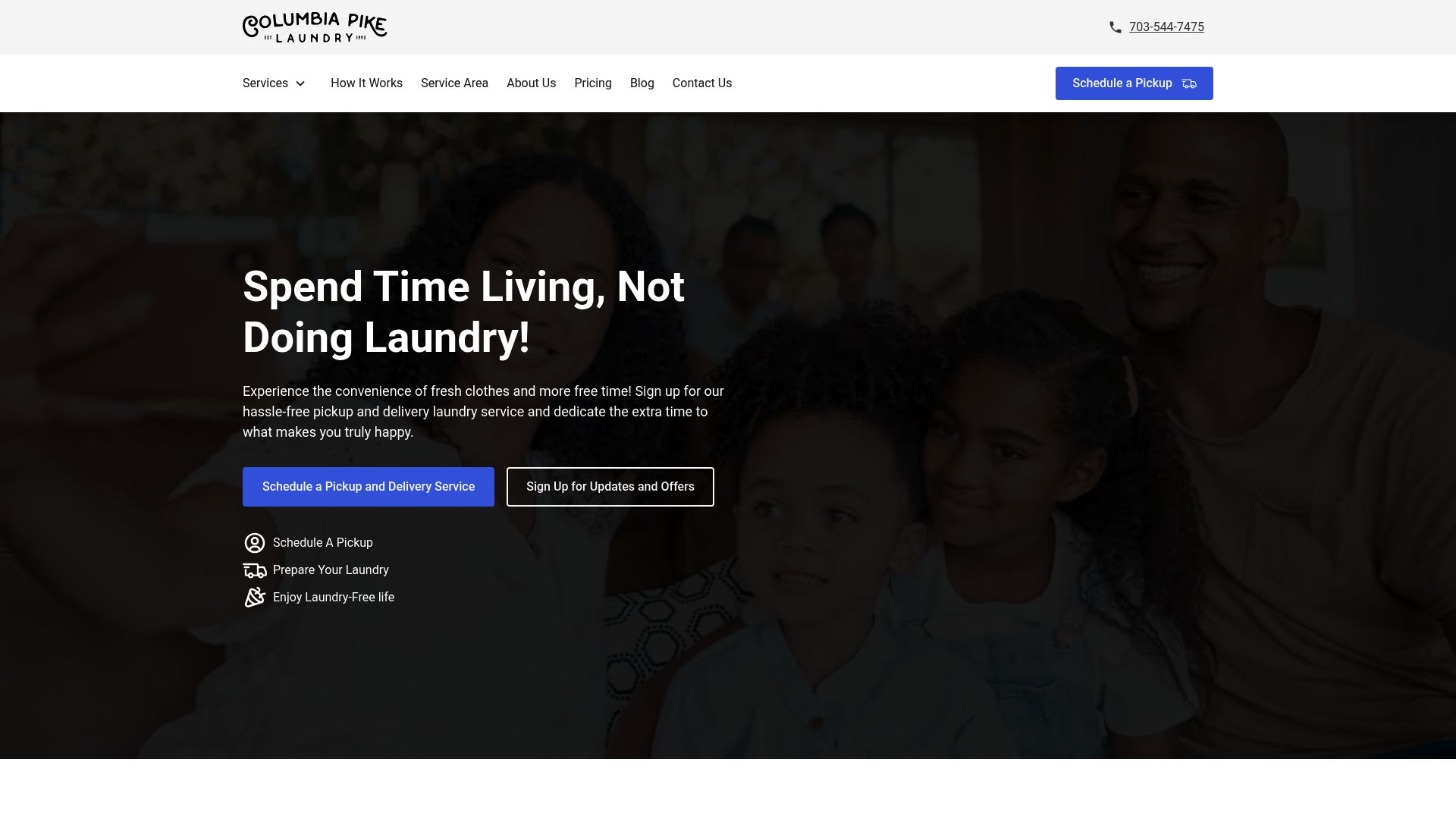
You do not have to struggle with inconsistent laundry schedules or wonder if your uniforms and linens are getting the detailed attention they need. With Columbia Pike Laundry, you get professional, in-house care for every item on your business laundry checklist. Set custom preferences, schedule pickups, and get reliable turnaround. Make your laundry one less thing to worry about. Visit our site today and let us help your business stay spotless and efficient.
Frequently Asked Questions
How do I assess my laundry needs for my business?
To assess your laundry needs, create a comprehensive inventory of all business textiles that require cleaning. Walk through your workspace, gather items, and organize them by fabric type, color, and cleaning requirements to ensure nothing is overlooked.
What is the best way to sort laundry items for cleaning?
Sort laundry items by color, fabric type, and soil level. Use a simple color-coding system and labels to clearly identify each category, which ensures that delicate items receive special treatment and prevents cross-contamination.
How can I effectively schedule laundry pickups for my business?
Choose between pickup and drop-off services based on your convenience and needs. For pickups, prepare items in a designated area and consider scheduling recurring pickups to streamline your laundry management process and avoid last-minute stress.
What cleaning preferences should I communicate to my laundry service?
Communicate specific care instructions for each textile category, including washing temperature, drying method, and any stain treatment required. Create a detailed preference sheet to ensure your laundry service accurately understands your needs and prevents potential fabric damage.
How do I confirm the quality of my cleaned laundry delivery?
Upon receiving your cleaned items, thoroughly inspect each one to ensure it meets your specifications for quality and cleanliness. Use a visual checklist to quickly compare each item against your original requirements and address any discrepancies with your service provider immediately.
What steps can I take to streamline laundry management for my business?
To streamline laundry management, create a systematic approach including assessing needs, sorting items, scheduling pickups, communicating preferences, and regularly reviewing quality. Aim for a consistent routine to enhance efficiency and maintain high standards in textile care.
Recommended
- How to Organize Laundry Room: Tips for a Functional Space | Laundry Tips
- | Laundry Tips
- Laundry Services A Modern Guide to Clean Clothes | Laundry Tips
- 7 Types of Laundry Services for Busy Families | Laundry Tips
Popular Blog Articles

Meet the Author
Daniel Logan didn’t start CPL because he loved laundry. He started it because his family was drowning in time debt, and laundry was one of the biggest weights.
Mornings were chaos with two kids under 5. Evenings felt like catch-up. And weekends? Gone to sorting socks and folding piles.
He knew his story wasn’t unique. So he built a business that gave families like his just a little bit of breathing room one load at a time.
With no laundry experience but deep tech skills, Daniel rolled up his sleeves, doing every job himself while building systems that turned it into a modern laundry service that saves customers time, simplifies their lives, and delivers reliability they can count on.
That’s where CPL began. Not from a playbook, but from pain. From one dad trying to buy back time: for himself, and for every household like his.


